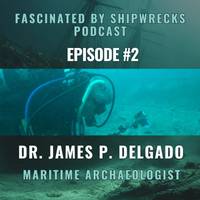
SHIPWRECK PODCAST: Exploring USS Stewart with James Delgado
under both American and Japanese flags during World War II. This groundbreaking discovery was made off the coast of northern California on a collaborative expedition between Ocean Infinity, the Air/Sea Heritage Foun-dation, SEARCH, NOAA’s Office of National Marine Sanctuaries, and the Naval History and Heritage Command (NHHC).We also get a bird’s-eye view of what Jim’s everyday work looks like. After 46+ years in the trenches, he has a lot to say. From constantly reading about current and past projects, writing articles and books, to going to sea and working with colleagues on research
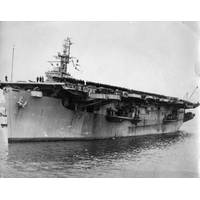
Wreck Site Identified as WWII Carrier USS Ommaney Bay (CVE 79)
Naval History and Heritage Command confirmed the identity of a wreck site as USS Ommaney Bay (CVE 79) July 10. While operating in the Sulu Sea, Ommaney Bay was hit and eventually mortally wounded by a twin-engine Japanese suicide plane on Jan. 4, 1945.NHHC’s Underwater Archaeology Branch used a combination of survey information provided by the Sea Scan Survey team and video footage provided by the DPT Scuba dive team, to confirm the identity of Ommaney Bay. This information correlated with location data for the wreck site provided to NHHC in 2019 by Vulcan, LLC (formerly Vulcan, Inc.).“Omman

Divers Find Deepest Known Shipwreck USS Johnston
the rest of the data collected during the expedition because the story of the Fletcher-class destroyer USS Johnston (DD 557) and her crew is a perfect example for modern Sailors of the honor, courage, commitment and valor of their predecessors from the Greatest Generation,” said Naval History and Heritage Command (NHHC) Director, Rear Adm. Sam Cox U.S. Navy (Retired).The World War II Fletcher-class destroyer USS Johnston (DD 557) was lost at the Battle off Samar, part of the Battle of Leyte Gulf, on October 25, 1944. Just 141 of the ship's 327 crew members survived.The wreck was originally
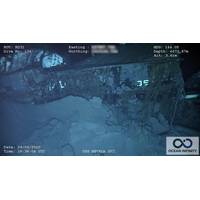
USS Nevada Shipwreck Located
used as a gunnery practice target. Unable to be sunk by the ships using her as a target, she finally went down having been hit by an aerial torpedo on July 31, 1948.USS Nevada (BB-36) underway off the Atlantic coast of the United States, September 17, 1944. (Official U.S. Navy Photograph, Naval History and Heritage Command) Dr. James Delgado, SEARCH's Senior Vice President and lead maritime archaeologist on the mission, said, "Nevada is an iconic ship that speaks to American resilience and stubbornness. Rising from its watery grave after being sunk at Pearl Harbor, it survived torpedoes

Sunken Submarine USS Stickleback Found
, I am proud of this recent Cold War discovery which honors the men, their memory and their mission," Taylor said."We're grateful for the respectful, nonintrusive work of the Lost 52 Project to locate and document the Navy's submarine wrecks," said Dr. Bob Neyland, Naval History and Heritage Command's Underwater Archeology Branch head. "Each discovery assists the Naval History and Heritage Command in its mission to preserve and protect the Navy's sunken military craft and provides an opportunity to remember and honor the service of our Sailors and Marines."
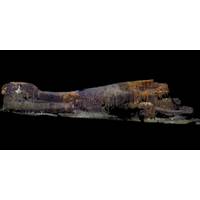
US Navy Sub Discovery Validated
;Lost 52 Project' continues to honor the men, their mission and their memory. It is important that they not be forgotten and that future generations recognize their invaluable sacrifice for our country and the world," Taylor said"Identification of a Navy gravesite is something Naval History and Heritage Command's Underwater Archaeology Branch takes great care in doing," said Sam Cox, Director of Naval History and Heritage Command. "After an exhaustive review of the data provided by Tim Taylor's team, we can positively identify the wreck as S-28."The keel of USS S-28
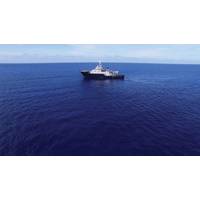
Wreckage of USS Wasp CV-7 Discovered
the start of WWII. Her pilots and her aircrew, with their courage and sacrifice, were the ones that held the line against the Japanese when the Japanese had superior fighter aircraft, superior torpedo planes and better torpedoes,” said Rear Adm. (Ret.) Samuel Cox, director of the Naval History and Heritage Command. “The first year of the war, it was touch and go. Those who served at that time deserve the gratitude of our nation for holding the Japanese back.”In its final battle, Wasp was hit in arguably the most effective spread of torpedoes in history by a Japanese submarine I-19
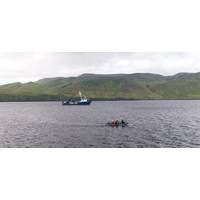
US Destroyer Wreckage Discovered off Remote Alaskan Island
destroyer apart. Somehow the crew kept the main part of Abner Read’s hull watertight, and two nearby Navy ships towed it back to port. “This was catastrophic damage that by all rights should have sunk the entire ship,” said Sam Cox, curator of the Navy and director of the Naval History and Heritage Command.Within months, the destroyer was back in the war. It went on to fight in several battles in the Pacific Theater before being destroyed in Nov. 1944 by a Japanese dive bomber in a kamikaze attack during the battle of Leyte Gulf. Abner Read received four battle stars for her World War
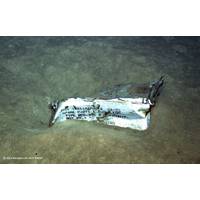
The Quest to Find and Explore USS Indianapolis
, leveraging a combination of historical records, detailed undersea topographical data and advanced technology to explore a 400 square nautical mile search area between Guam and Palau in the Philippine Sea. A key data point came from a discovery by Dr. Richard Hulver, a historian with the Naval History and Heritage Command, who identified a naval landing craft that had recorded sighting the USS Indianapolis hours before it was torpedoed. All this research led to a new estimated position west of where previous searches have been conducted. But even with the new insight, finding a ship that has

 December 2025
December 2025




